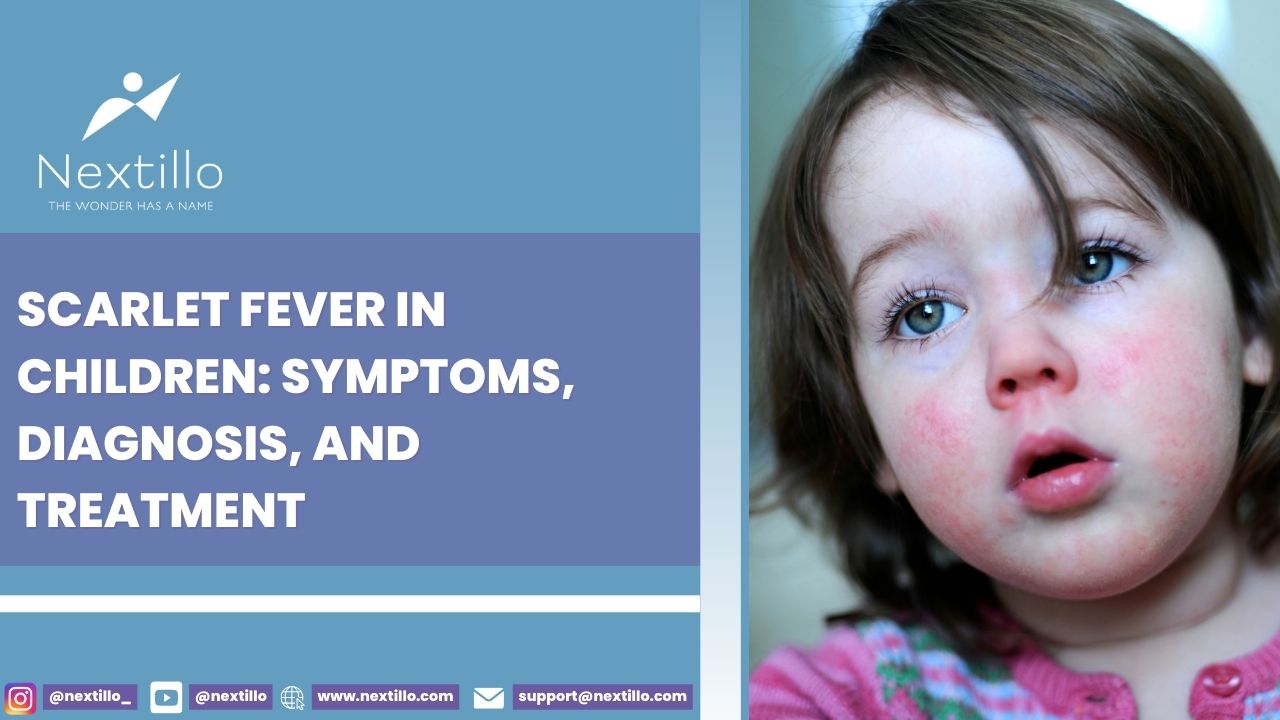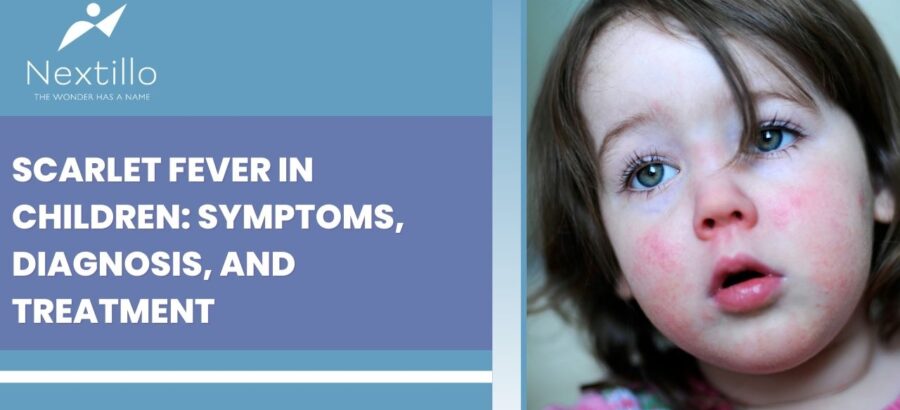INTRODUCTION
Scarlet fever is a streptococcal illness in children caused by Group A Streptococcus bacteria. Scarlet fever is strep throat due to the same bacterium complication. Scarlet fever is a red rash, sore throat, and fever. Scarlet fever was an old illness, but nowadays it is easy to treat with antibiotics. It is not a complication if treated. Scarlet fever cause, symptoms, diagnosis, treatment, and control in children are all described in detail in this blog.
CAUSES OF SCARLET FEVER
- Streptococcus pyogenes bacteria are the causative organism of scarlet fever, whose red rash appears as a result of the toxins discharged. Scarlet fever is spread through
- Respiratory droplets: spread because of the sneezing or coughing of the patient.
- Direct contact: transmitted by direct contact via the towel, utensil, or toys of an infected person.
- Touch with an infected surface and subsequent touching of the nose or mouth.
SYMPTOMS AND SIGNS
- Signs of scarlet fever typically occur 1 to 4 days after infection with the bacteria.
- The most common are:
- Sudden rise in body temperature to above 101°F (38.3°C), usually accompanied by chills.
- Sore throat: red, inflamed pharynx and tonsils, and possibly yellow or white patches covered.
- Strawberry Tongue: red, sore, spotted, and little bumps everywhere, hence strawberry-red.
- Red Rash: Red rash that first on armpits, neck, and chest and then on the rest of the body. It feels sandpapery to the touch.
- Flushed Face: Flushed face and white mouth.
- Swollen Glands: Sore and swollen lymph nodes in the neck.
- Peeling Skin: Peeling skin after the rash has faded, i.e., fingers and toes.
DIAGNOSIS OF SCARLET FEVER
- Scarlet fever is diagnosed by the physician on
- Physical Examination: For characteristic rash, strawberry tongue, and red pharynx.
- Throat Swab Test: Rapid strep or throat culture to identify Group A Streptococcus bacteria.
TREATMENT OF SCARLET FEVER
- Scarlet fever is treated with antibiotics, and the most commonly used one is penicillin or amoxicillin. It includes:
- The patient is prescribed penicillin or amoxicillin for 10 days. Depending on the allergy, other drugs like cephalexin or azithromycin are prescribed.
- fever reduction: Acetaminophen or ibuprofen may be prescribed to bring down fever and sore throat.
- intake of fluid: The throat dries up and becomes less wet by consuming non-irritating warm fluids like tea or soup.
- REST: Rest leads to quick recovery of the body.
- Soft Food: Yogurt, smoothies, and mashed potatoes are soft and easy to swallow as opposed to hard to swallow.
- Saltwater Gargle: Saltwater gargle and warm water gargle may cure sore throat.
Read more: Pediatrics Blogs for Fmge and Neet PG Preparation
UNTREATED SCARLET FEVER COMPLICATIONS
- Untreated Scarlet fever can develop serious complications, which are
- Rheumatic fever—inflammatory heart disease, joints, and brain in a rare manner.
- Kidney Disease (Post-streptococcal Glomerulonephritis): an immune attack to develop inflammation of the kidneys.
- Ear Infections: Middle ear infection (otitis media) caused by bacteremia.
- Pneumonia: Rarely, the bacteria infect the lungs and result in pneumonia.
- Sinusitis: Sinus infection can be a complication.
PREVENTION OF SCARLET FEVER
- Scarlet fever is prevented by proper practice of hygiene and infection control, i.e.
- Hand Washing: Proper hand washing with soap never provides any opportunity for the germs to move towards the body.
- Nose and Mouth Covering: Compelling children to shut their mouths when coughing and sneezing never gives any room for the germs to spread.
- Sharing Objects: Do not share objects like towels, spoons, and mugs with the patient.
- Surface Disinfection and Cleaning
- Disinfecting and cleaning door handles, toys, and other objects frequently to stop the spread of bacteria.
- Stay in Home during Sickness: Send the children to school after 24 hours of antibiotic treatment and when they also recover from the fever.
WHEN to see a doctor?
- Parents need to go see the doctor if their child:
- 1-4 days or more than a few days or over 102°F (38.8°C) with severe fever
- Trouble swallowing or breathing
- Nauseating, sharp pain in the throat when swallowing
- Itchy spreading rash
- Dryness in mouth and fewer urinations, which are symptoms of dehydration
CONCLUSION
Scarlet fever is an infectious illness among children, but if prescribed antibiotics can be cured. Treatment and diagnosis early on ensure there are no complications and recovery fast. Right infection control and hygiene also prevent the passing of Group A Streptococcus bacteria. If your child has developed signs of scarlet fever, contact a physician soon and avail treatment.







